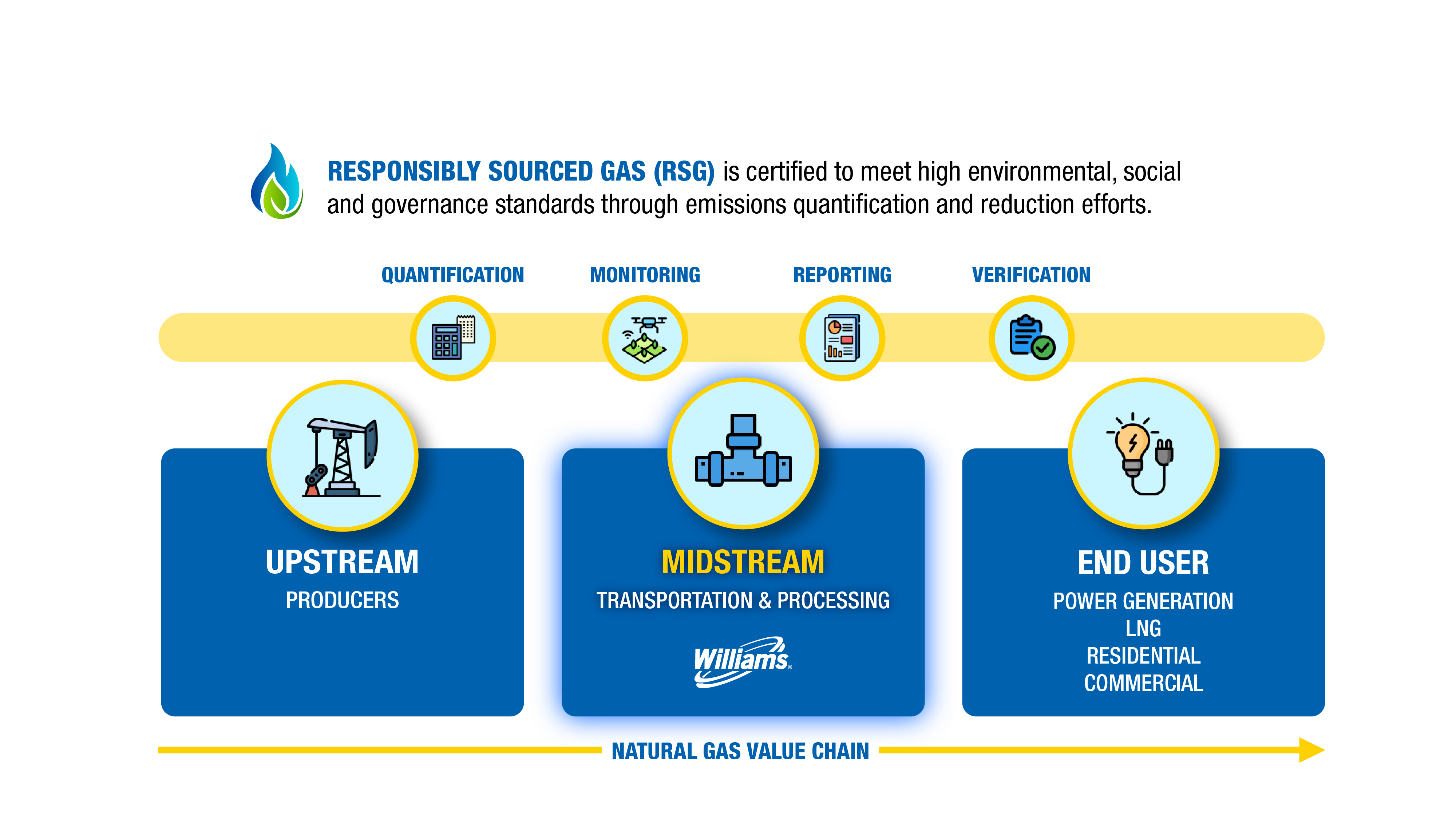
Responsibly Sourced Gas (RSG) has the potential to change the global market for natural gas and position the U.S. as a low-carbon leader in reducing emissions.
RSG is natural gas that is certified to meet high environmental, social and governance standards through emissions quantification and reduction efforts. Midstream companies like Williams are important to ensuring those standards are realized across the natural gas value chain.
“Our customers and stakeholders are asking for this sort of product,” said Angela John, director for Williams’ New Energy Ventures team. “Upstream producers are already working to verify their gas, but it will also take action by midstream companies like Williams to ensure RSG-defined gas meets high standards from well head to burner tip.”
To support the data accuracy and transparency needed to certify RSG, Williams is developing an emissions quantification, monitoring, reporting and verification (QMRV) program. This program will deploy a suite of advanced measurement technologies to supplement the current industry standard of “ground-up” measured and factor-based emissions.
In addition to these current industry standards, we plan to deploy continuous emissions monitoring units. This compliments the “ground-up” approach of Leak Detection and Repair (LDAR). Additionally using a “top-down” approach, state-of-the-art technology including drone, aircraft and satellites can provide measurement-based emissions data. This QMRV strategy strengthens the understanding of actual emissions and makes reduction efforts quantifiable.
For compliance with EPA regulations on our gathering & boosting, processing and transmission assets, Williams adheres to the protocols using factor-based and ground-based measurement emissions calculations.
“This is currently the standard for all oil and gas companies, but as Williams looks to the future, we have the unique scope and opportunity to be proactive through the use of state-of-the-art technology to best monitor and measure our assets’ emissions,” John said.
Factor-based calculations are estimates made by aggregating emissions data from counts of individual pieces of equipment and application of EPA or ONE Future emissions factors. This can lead to overcalculating or underestimating emissions. Top-down emissions measurement is key in meeting industry and Williams’ climate commitments, and supporting a full value chain approach.
Williams is working to develop this QMRV program for greenhouse gas measurement through deploying pilot studies and establishing strategic partnerships with methane science organizations and technology providers for top-down QMRV of our assets.
Partnerships include those with GTI, through their Veritas initiative, and the Collaboratory for Advancing Methane Science (CAMS).
Williams also is a member of the ONE Future coalition, a group of Natural Gas companies working together to voluntarily reduce methane emissions across the natural gas value chain. A 2020 methane emissions intensity report, found the coalition members registered a methane intensity number of 0.334 percent, beating its 1 percent goal by 67 percent.
